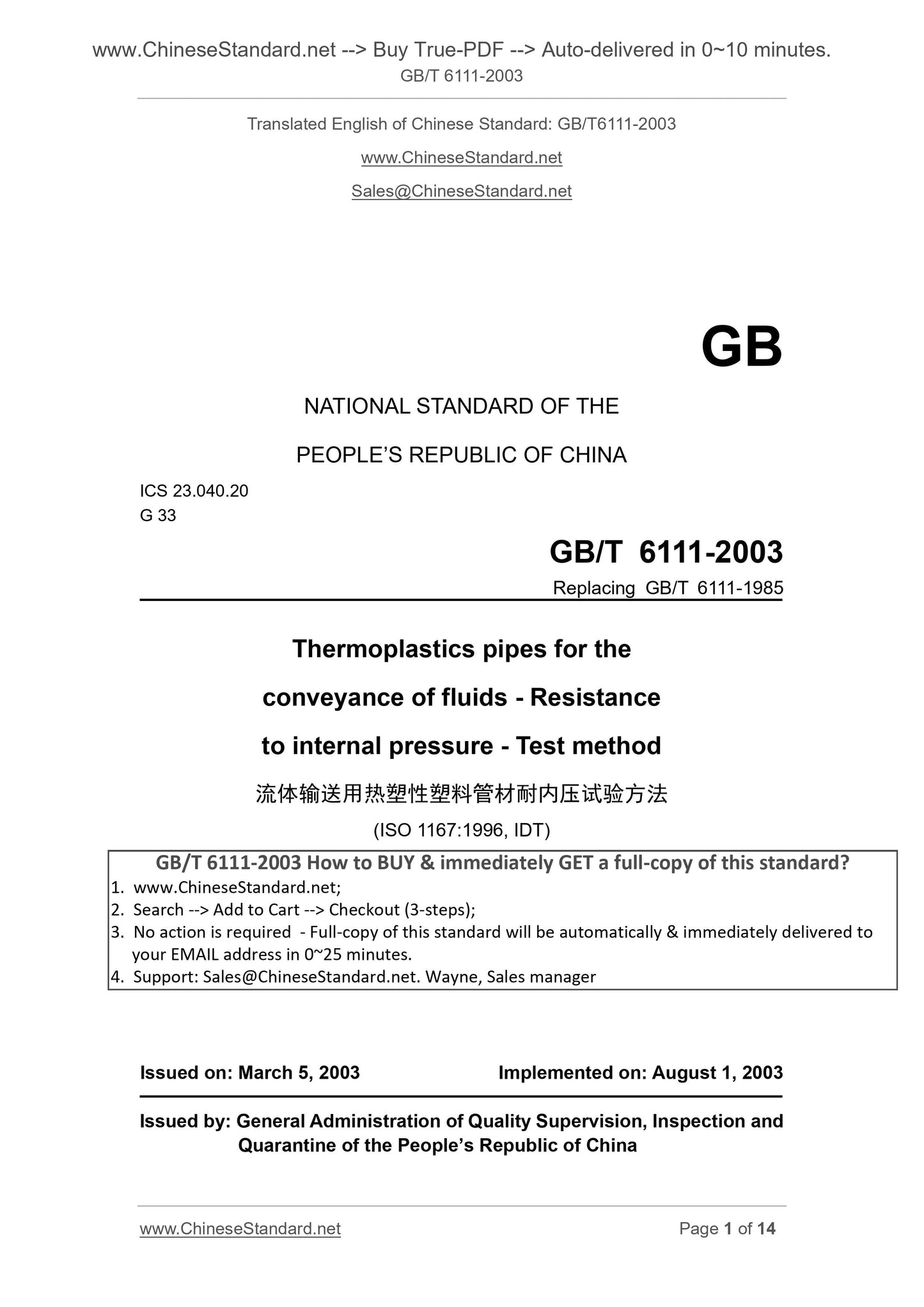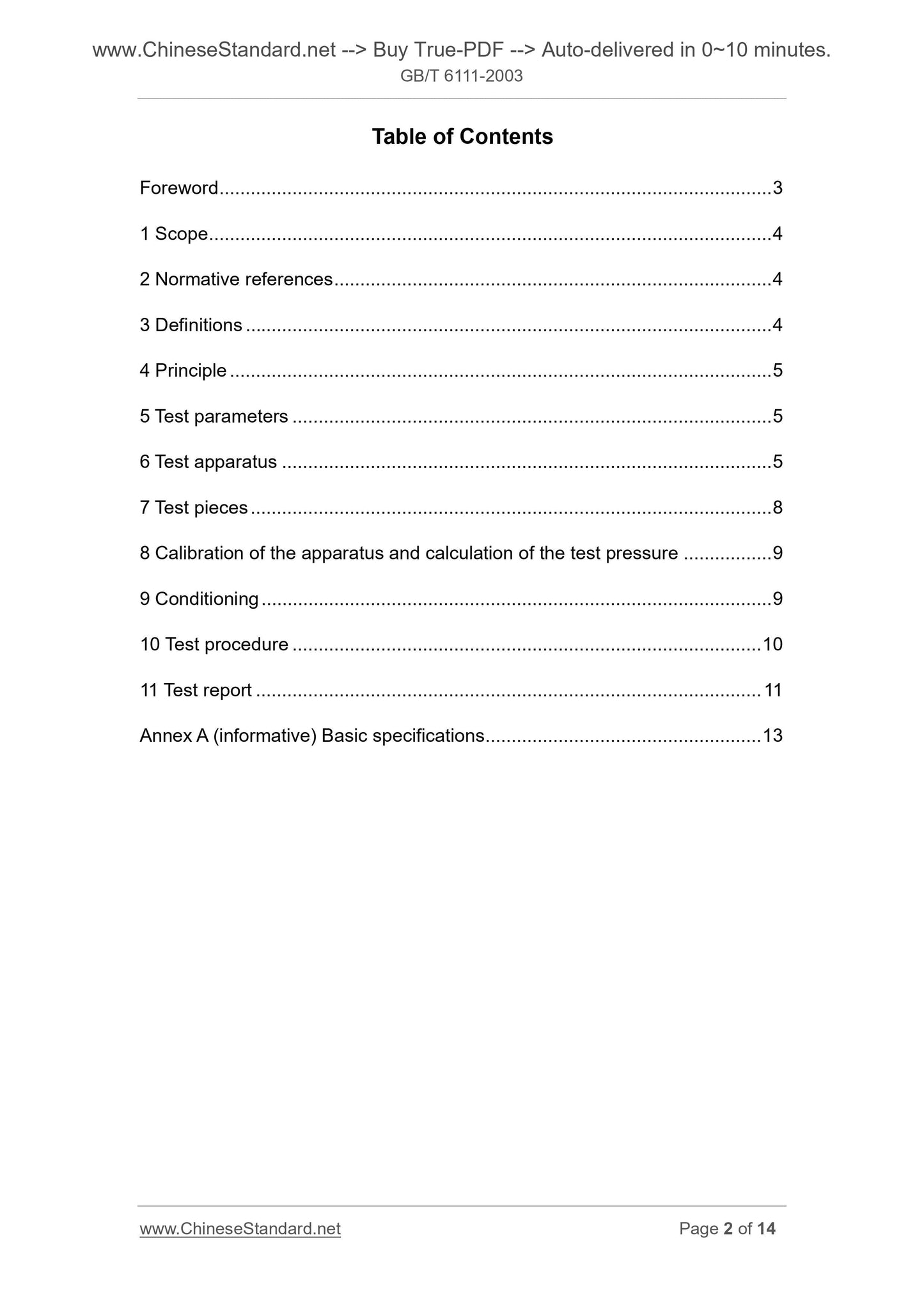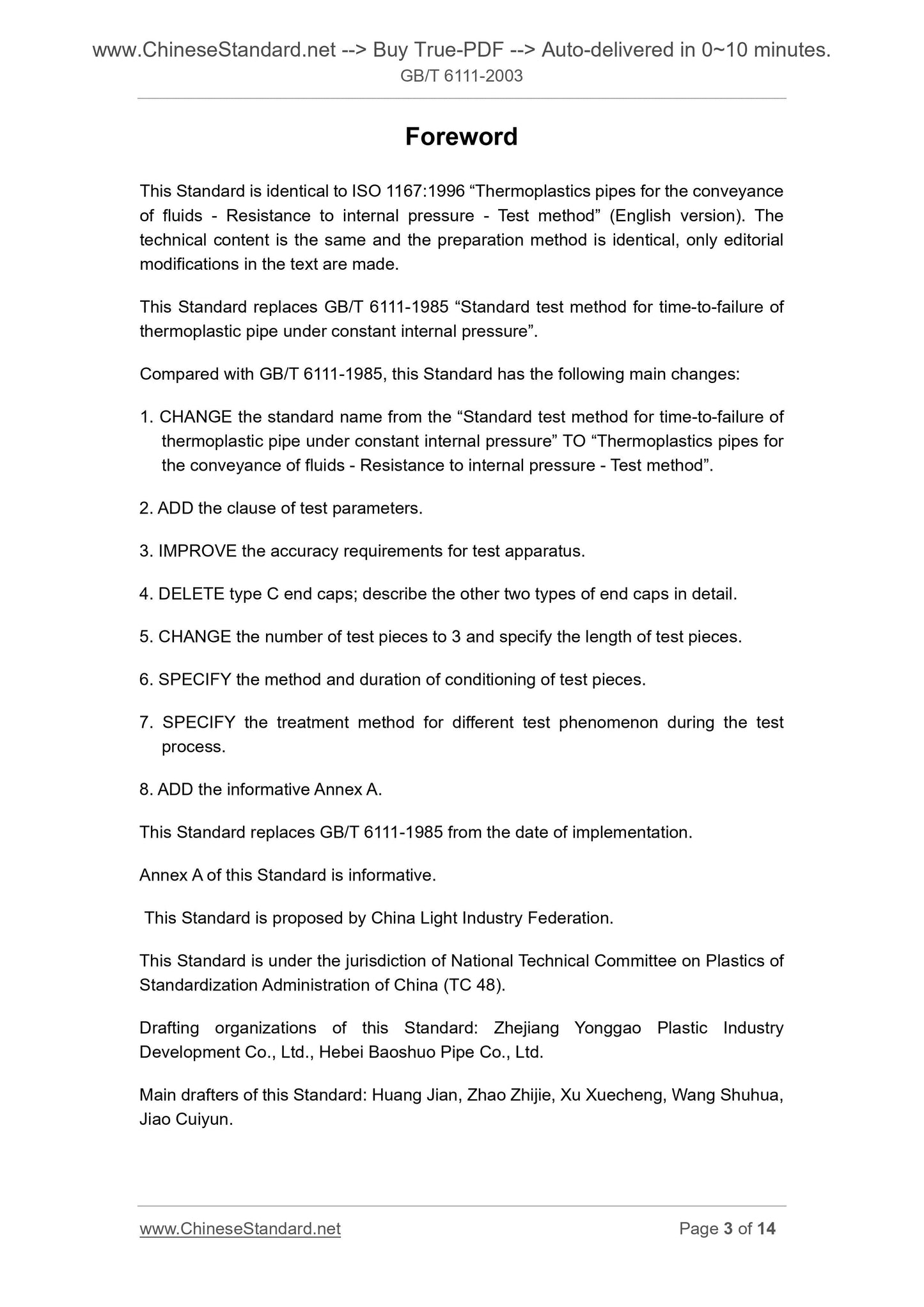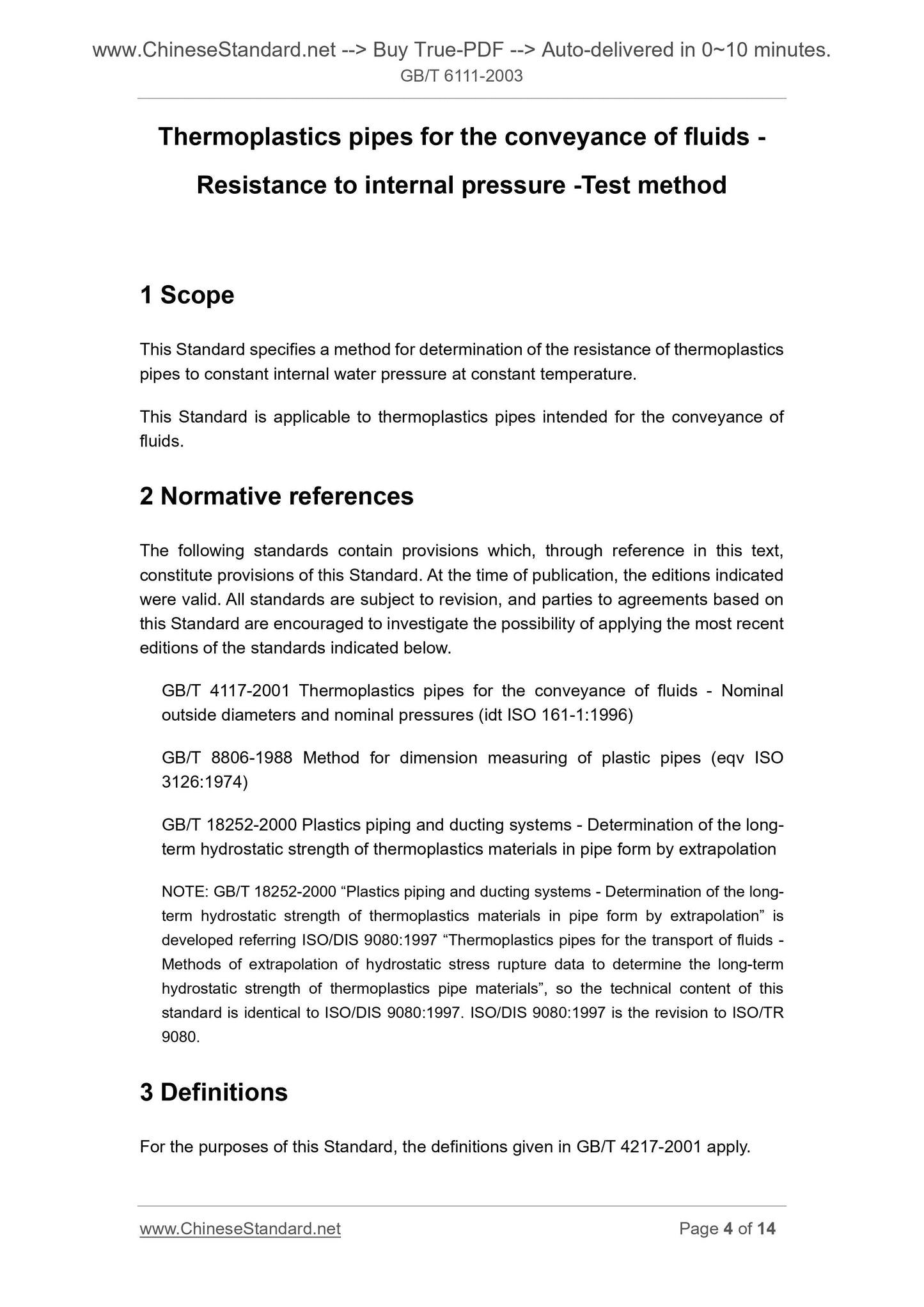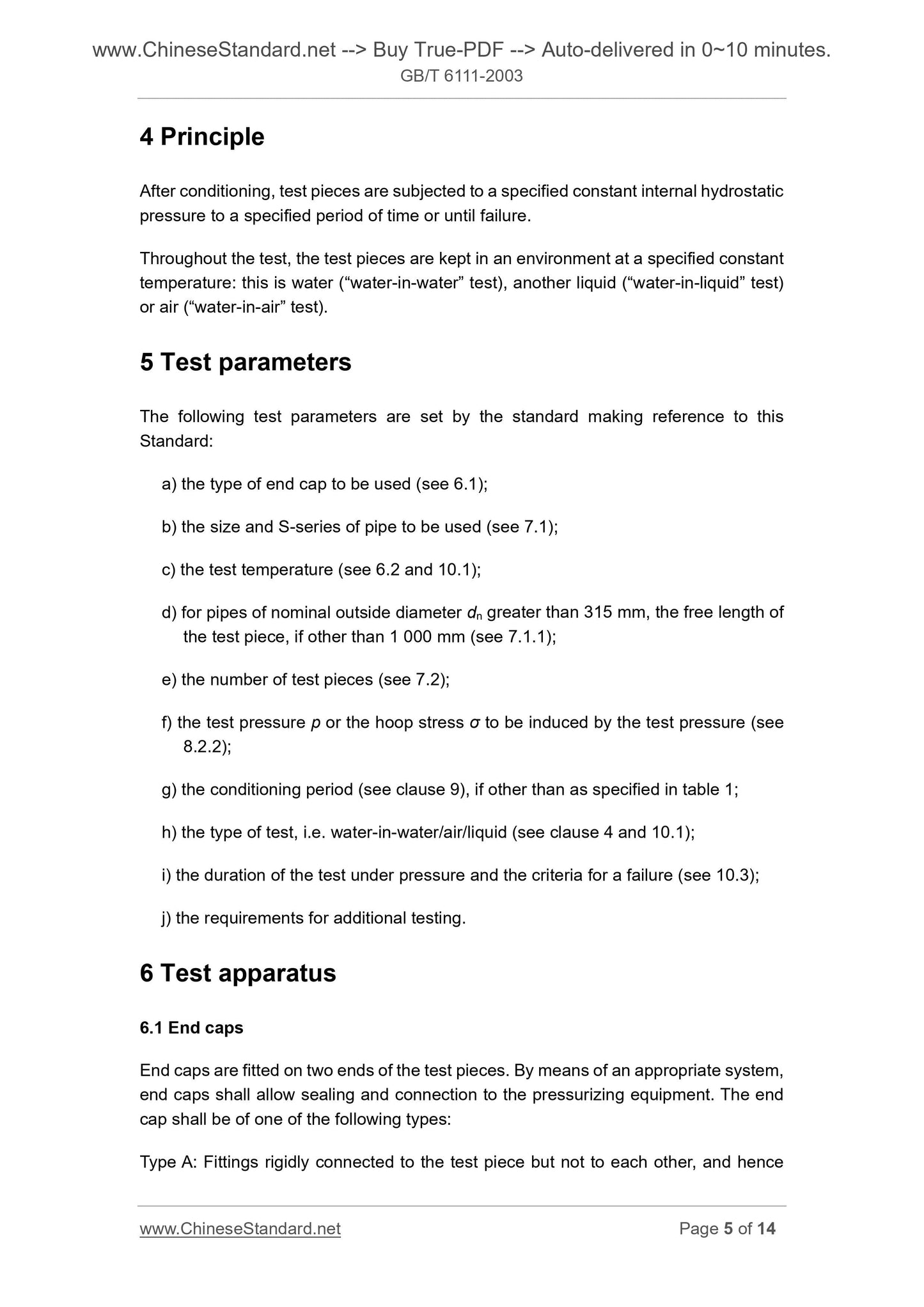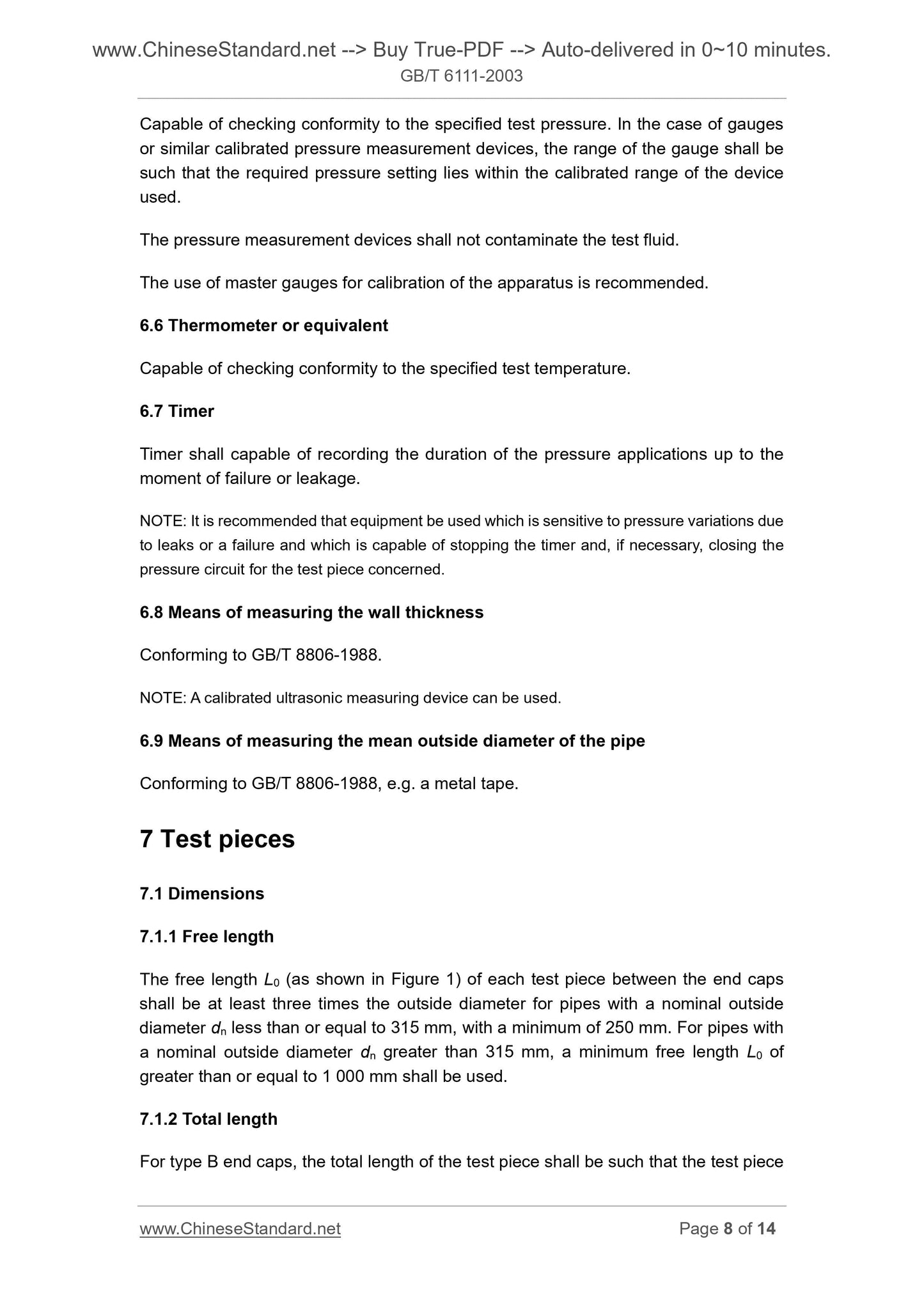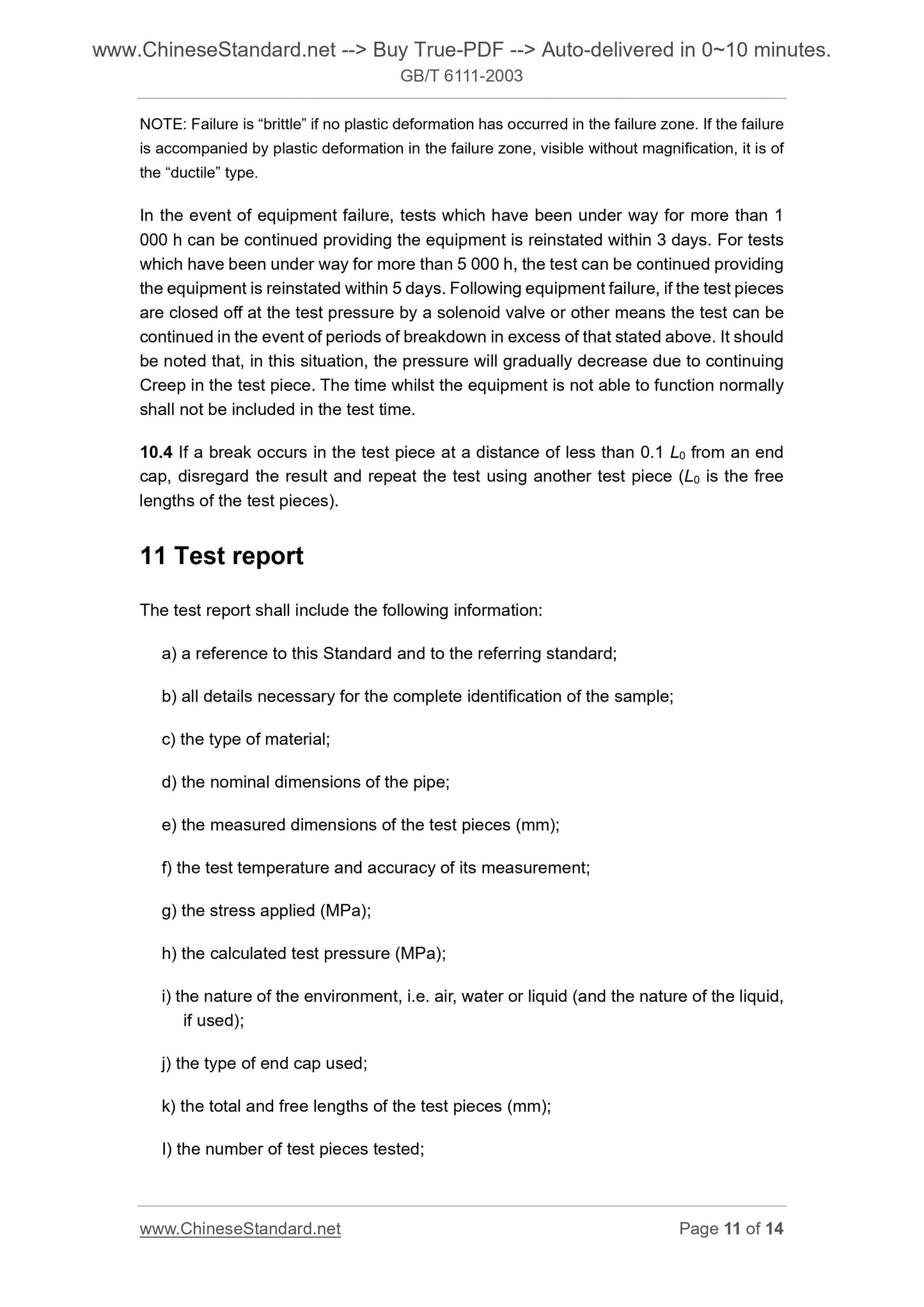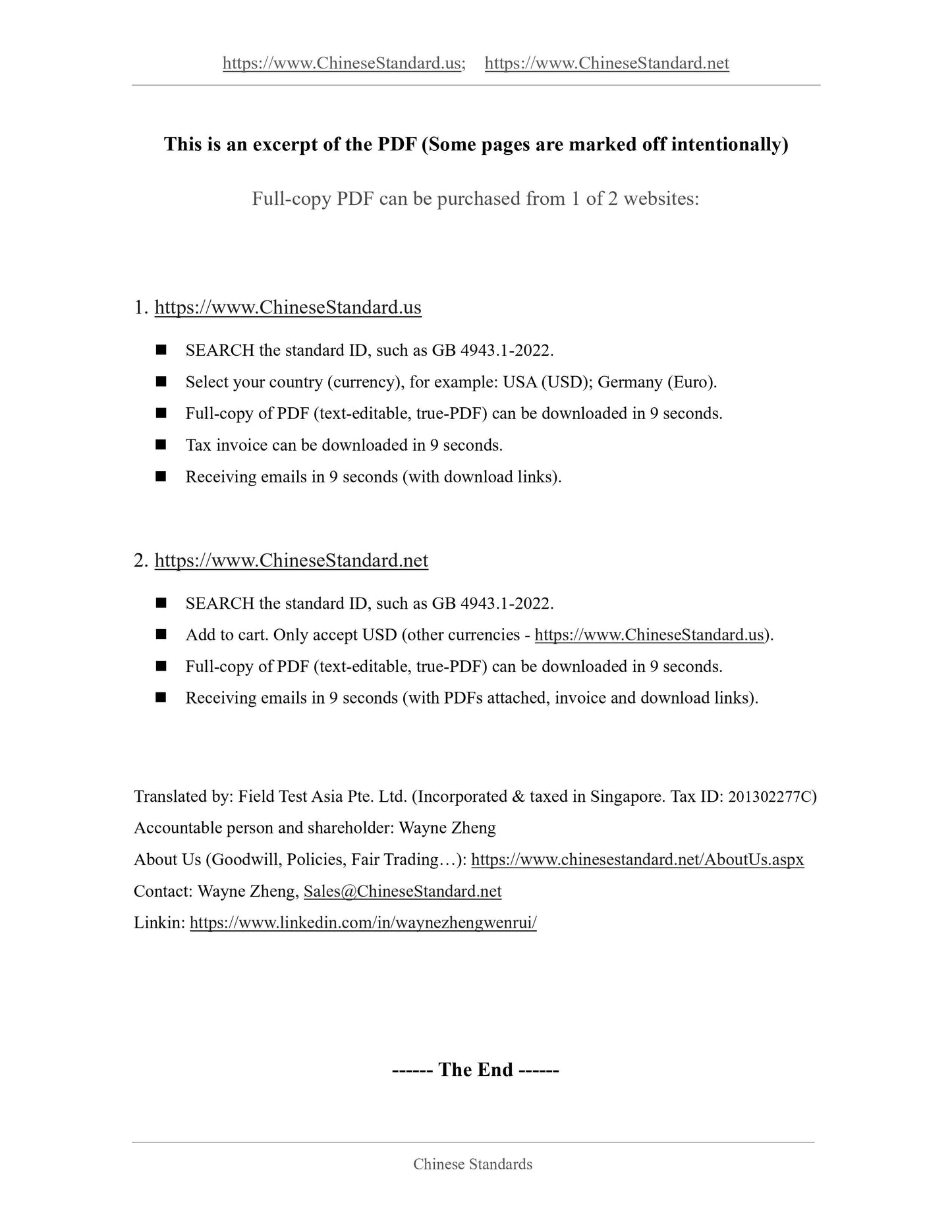1
/
of
8
www.ChineseStandard.us -- Field Test Asia Pte. Ltd.
GB/T 6111-2003 English PDF (GB/T6111-2003)
GB/T 6111-2003 English PDF (GB/T6111-2003)
Regular price
$120.00
Regular price
Sale price
$120.00
Unit price
/
per
Shipping calculated at checkout.
Couldn't load pickup availability
GB/T 6111-2003: Thermoplastics pipes for the conveyance of fluids -- Resistance to internal pressure -- Test method
Delivery: 9 seconds. Download (and Email) true-PDF + Invoice.Get Quotation: Click GB/T 6111-2003 (Self-service in 1-minute)
Newer / historical versions: GB/T 6111-2003
Preview True-PDF
Scope
This Standard specifies a method for determination of the resistance of thermoplasticspipes to constant internal water pressure at constant temperature.
This Standard is applicable to thermoplastics pipes intended for the conveyance of
fluids.
Basic Data
| Standard ID | GB/T 6111-2003 (GB/T6111-2003) |
| Description (Translated English) | Thermoplastics pipes for the conveyance of fluids - Resistance to internal pressure - Test method |
| Sector / Industry | National Standard (Recommended) |
| Classification of Chinese Standard | G23 |
| Classification of International Standard | 23.040.20 |
| Word Count Estimation | 8,815 |
| Date of Issue | 2003-03-05 |
| Date of Implementation | 2003-08-01 |
| Older Standard (superseded by this standard) | GB/T 6111-1985 |
| Quoted Standard | GB/T 4217-2001; GB/T 8806-1988; GB/T 18252-2000 |
| Adopted Standard | ISO 1167-1996; IDT |
| Issuing agency(ies) | General Administration of Quality Supervision, Inspection and Quarantine of the People Republic of China |
| Summary | This standard specifies: thermoplastic pipe constant pressure at a constant temperature inside Test methods. This standard applies to: Thermoplastics pipes for fluid transport. |
Share
